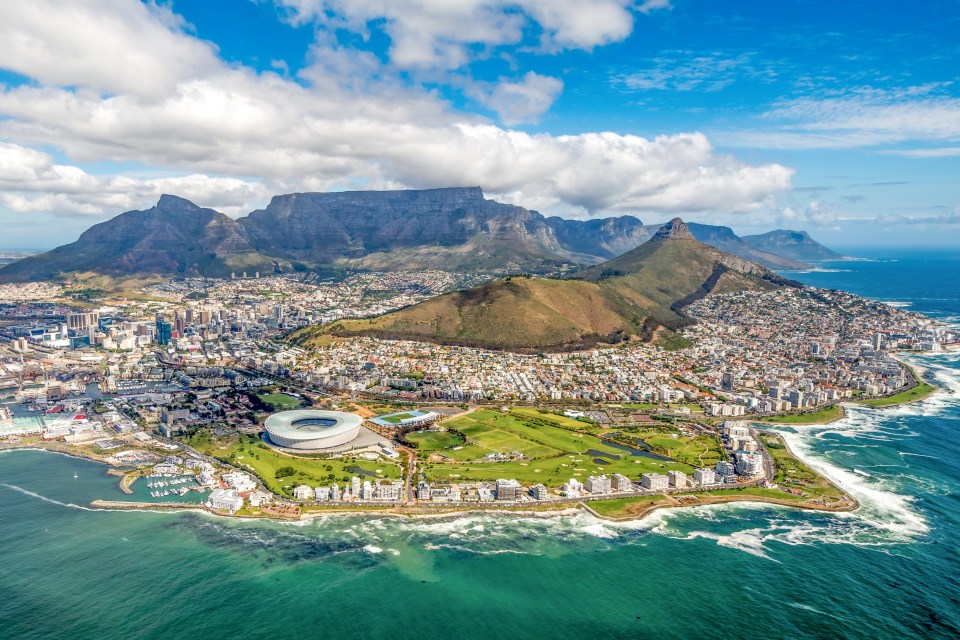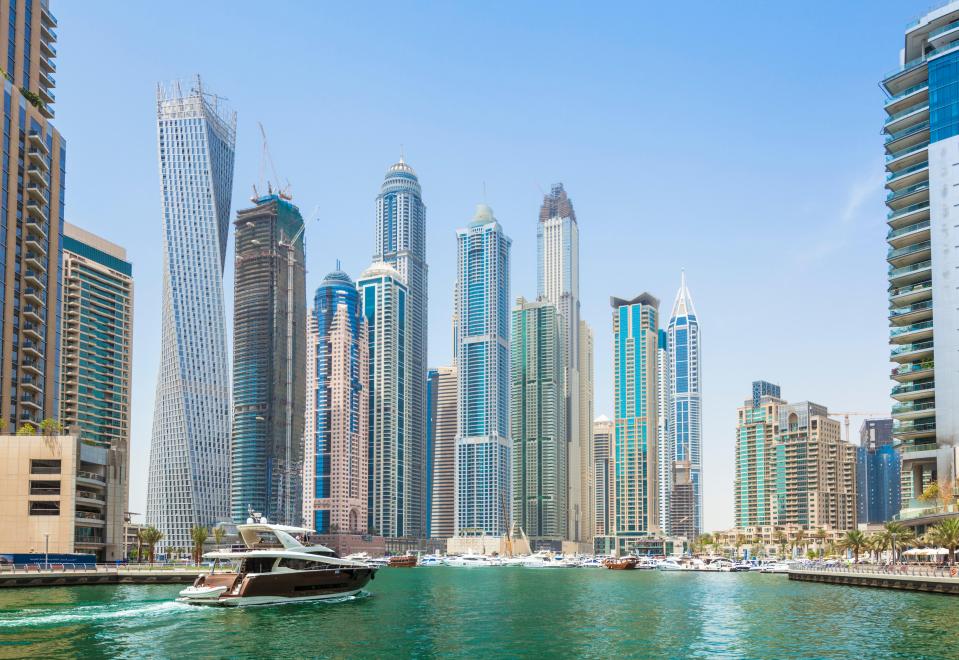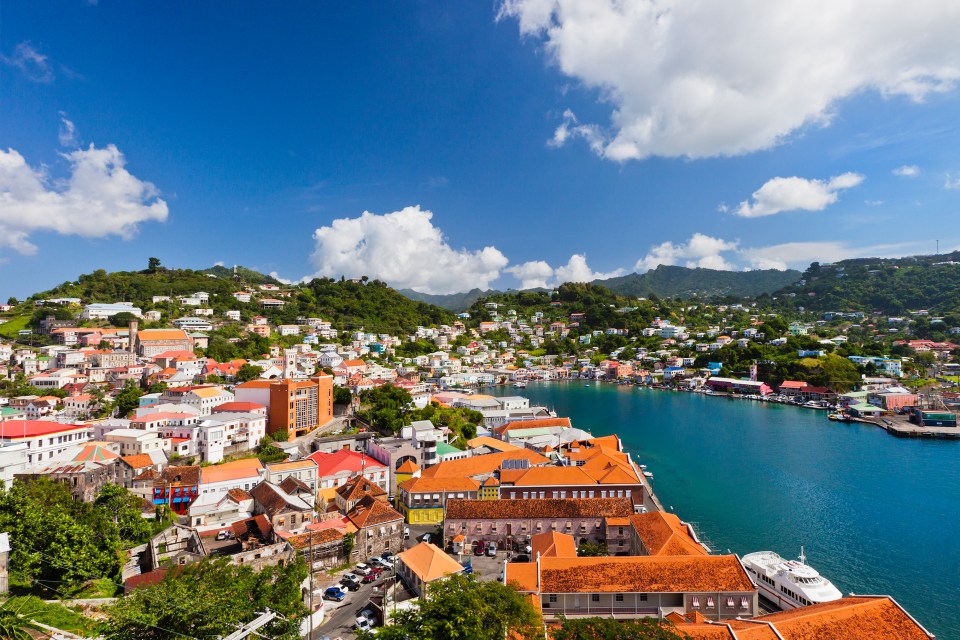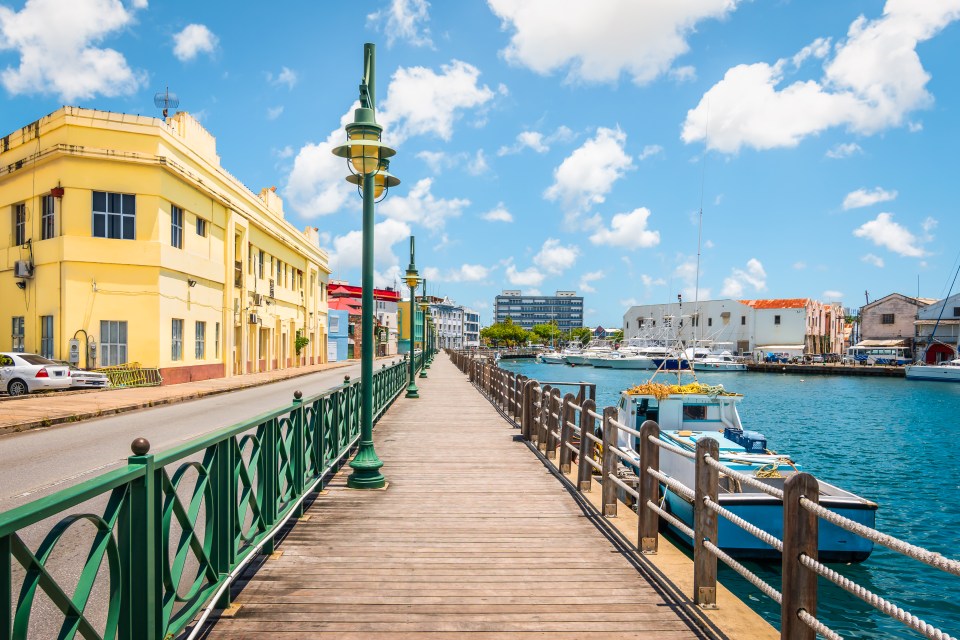This is an audio transcript of the FT News Briefing podcast episode: ‘Swamp Notes: How the Middle East conflict is shaping the election’
Sonja Hutson
When it comes to conflict in the Middle East, President Joe Biden and vice-president Kamala Harris have repeatedly hit the same message.
Kamala Harris voice clip
Now is the time to get a hostage deal and a ceasefire deal done.
Sonja Hutson
But after nearly a year, the fighting continues and may be closer than ever to an all-out war.
[MUSIC PLAYING]
This is Swamp Notes, the weekly podcast from the FT News Briefing where we talk about all of the things happening in the 2024 US presidential election. I’m Sonja Hutson. And this week we’re asking: How could fighting in the Middle East shake up the US presidential race? Here with me to discuss is Felicia Schwartz. She’s the FT’s US foreign affairs and defense correspondent. Hi, Felicia.
Felicia Schwartz
Hello.
Sonja Hutson
And we’ve also got Derek Brower, the FT’s US political news editor. Hi, Derek.
Derek Brower
Hi, Sonja.
Sonja Hutson
So we are days away from October 7th, which will mark a year since the war in Israel, Gaza and the wider Middle East began. The Biden administration has tried to secure a ceasefire in Gaza and prevent a wider regional war. It has failed on both of those counts. Felicia, why has the administration proved so powerless to influence this conflict in the way that it wants to?
Felicia Schwartz
I think there are a few things at play here. I would say one, of course, this is a complicated situation because you’re dealing with a sovereign state, Israel, and a terrorist group in Gaza, Hamas. The US has leverage over its close ally, Israel. It’s working with partners in the Middle East that have leverage, to some extent, over Hamas because they support the group financially or, you know, have historical ties. But all that being said, throughout the process the US has, and President Biden in particular, who’s described himself as, you know, the most, one of the most Zionist, if not the most Zionist president, feels a deep connection to Israel, has not really been willing to use a ton of American leverage with Israel to get them to change its course, namely withholding shipments of American weapons, except in one case. So I think, you know, the US can’t want a deal more than Israel does. And I think at various turns it’s been clear that Israel doesn’t really want a deal.
Derek Brower
Netanyahu as well is a really difficult character for them to deal with. Let’s face it, he’s under pressure domestically himself. He can’t deliver sometimes what the Americans want for his own domestic reasons and for his own ambitions. So it’s really, it’s been a really, really thorny one. And the Biden administration has, at various times, seems failed the test.
Felicia Schwartz
If I could just add one thing, too. I used to be a reporter based in Israel. I think one of the things that’s come through to especially like talking to old kind of sources and colleagues who are still there is the news environment in Israel and what people are experiencing there is super, super intense and different. And they think that the US and, and others around the world, in Europe, etc., like totally kind of misread Israeli popular opinion on all of this because Netanyahu is very unpopular. There was this whole judicial overhaul thing that was happening before October 7th. He was potentially on his way out, many thought. But what’s happening in Lebanon, for example, right now, it’s polling really well, this feeling that, okay, the Israelis can kind of like finally have some shot at dealing with this like thorn in their side, this major threat, Hezbollah in the north. I just think that, you know, when the US is trying to pressure Israel, how this is playing domestically in Israel also weighs on its leaders. So it’s just a bit more nuanced and complicated in terms of where they can push, how they can push.
Sonja Hutson
So, Felicia, you mentioned one tool that they, that the Biden administration has not really used is withholding weapons, withholding military aid. Why is that? Like, is that the only tool that they have at their disposal to push Israel in the direction of de-escalation?
Felicia Schwartz
I think it’s definitely the most powerful tool. They could be a bit more forceful with Israel at the UN, not come to Israel’s defense there as much as Israel really cares about. But just just going back to this question of military aid. There’s been strong bipartisan support in the US for a strong defense partnership with Israel to the tune of, you know, almost $4bn a year at this point. And that aid is, is like largely devoted to preparing Israel for any sort of conflict with Iran, which is a, you know, considered Israel’s greatest threat in the region. And I think there is a fear whether you’re going to that kind of historical, kind of pro-Israel group of people. But even among those who are, you know, not as sure about the relationship, that while it would be a good idea in theory to use this powerful lever that the US has, the US also has a great interest in preventing conflict between Israel and Iran, which the US would be drawn into. And they fear that any, like serious withholding of weapons, any “daylight” between the US and Israel kind of invites Iran to, you know, seize on this weakness. And that is actually not good for the US.
Derek Brower
We can’t also avoid but talk about the kind of domestic calculations that are in every leading politician in the US when they think about Israel. And that is that there isn’t really a constituency that doesn’t support Israel. Not, not at the heights of the commanding heights of US power. There isn’t really a constituency that would back away from supporting Israel, especially after October 7th. And that’s even before you consider that we’re in an election year when those things are really, really important.
Sonja Hutson
What about this, you know, for example, the undecided movement in Michigan? Wouldn’t that be a constituency that would not want the US to be closer to Israel?
Derek Brower
I think it is. I think it is. And we should be very, I mean, we need to draw attention to them because it’s, there’s a big Arab-American community in Michigan. They already did vote in the primary, Democratic primary for this undecided vote to register their protest against Biden’s policies. I think the calculation that the Democratic Party is making right now and Harris’s camp is making is that there are more people on the other side of that issue. And so they can somewhat discount that. And they also have this very cynical message to those people, which is, well, really you think Trump is going to be better? And when you boil it down, Trump probably wouldn’t be necessarily better if your, you know, you have family who are living in Gaza. So . . . but that is, to be clear, that’s quite a cynical way to talk to people who are protesting about American foreign policy or who are suffering through their relatives in an area of the world being affected by all this violence. But, not to be too rough on the voters, but I think most voters probably just see chaos in the Middle East and they’re focusing on that stuff, they’re focusing on the cost of groceries. At the moment, they’re focusing on a hurricane that’s demolished parts of North Carolina, inflation, focusing on jobs. You know, there’s (plenty of) domestic, domestic, domestic stuff.
[MUSIC PLAYING]
[TECH TONIC TRAILER PLAYING]
Sonja Hutson
So, Felicia, I know that Derek said before the break that voters don’t really care as much about foreign policy as they do about domestic issues. But I do want to ask still, how would Trump versus Harris approach the situation in the Middle East?
Felicia Schwartz
Just starting with Trump. He has said things like, you know, this is really bad PR for Israel. It’s got to end. He was asked at a press conference when he was in New York about what’s going on in Lebanon. He said, you know, this has to end. It’s time to wind this down. So I think if Netanyahu is betting that a Trump administration might be super permissive on what they’re doing, I think that Trump has kind of also made clear that he’s got limited patience for what you might describe as Israeli adventurism in the Middle East. And I think that, you know, might help to explain why we’re seeing Israel take its shots now, because I think there’s some perception that Biden is a lame duck, that if Israel really needs defending, he will come to defend them. And, you know, Trump, for better or worse, can be unpredictable, right? And then on the Harris side, she has especially since she’s become the candidate for president and the tone was very different. She emphasized more Palestinian suffering and kind of empathy for what they’re experiencing in a way that President Biden, you know, can’t or hasn’t been able to do. I don’t really anticipate that that would be a big change. But I think at least, like tonally, things would be different.
Derek Brower
I think tonally is really important to stress, because it’s not like one of them is going to establish statehood for the Palestinians or fix the Middle East. They aren’t. (Yeah) I mean, this is not. Both of them would rather just not have to think about it, really. So we have to wait till the election’s gone and then, then the real strategizing will begin. At the moment, this foreign policy is just not something that wins votes.
Sonja Hutson
So, you know, we hear a lot about this idea of an October surprise in US politics, which is, you know, an event or revelation that shakes up the presidential race in the final weeks. Do you think the escalation of the conflict in the Middle East could be this year’s October surprise? Like, how important is this to the election?
Derek Brower
If it’s oil prices, that pushes up oil prices, then absolutely. Then we could have a series of October surprises. But I think the biggest threat and the one that will be keeping Harris’s team awake at night is if oil prices suddenly start rising, as they are right now, by the way, they, they’re up. And in fact translates to gasoline prices.
Felicia Schwartz
It feels like, you know, I’ve been covering this conflict now, it’s, in all of its twists and turns for a year. And, you know, every week or month, I think to myself, wow, we’re really high up the escalation ladder. This seems really dangerous. And I think right now this is the highest up the escalation ladder the US, Israel, Iran, Hezbollah have been. And I’m not sure how many more rungs there really are to go before this thing, you know, can’t be contained anymore. And one of the kind of things that the US is super nervous about is, you know, there are 40,000 troops in the Middle East right now. If any sort of Iranian proxy group, whether under direction from Iran, or Iran has lost control of these groups, decides to attack American forces and is successful, that could you know, (that would be huge) that would be huge. So far, there have been several, you know, several attacks. There were American service members who died in Jordan earlier this year. But generally speaking, the US has avoided casualties. But, you know, two weeks before the election, that could be a huge problem.
Derek Brower
I think it’s all a gift to Trump. It really is, because he can very successfully send out adverts into the swing states about how the world is in chaos. He’s doing that. That’s his message. World’s in chaos we don’t need. I think one of his adverts (inaudible) said we don’t need a TikTok star, referring to Harris and her kind of success in activating and energizing a bunch of younger people on TikTok. What they need is a powerful leader who other leaders around the world are scared of. So it’s a gift to him. And that’s why the Biden administration, and Harris, is so keen to talk about anything else. Remember the single most important thing for voters in this election is the cost of living in the US. If gasoline prices start to rise again because of some wars of which they had no control or Biden lost control of or whatever, somewhere else, that will be a message that Trump hammers relentlessly in the final weeks.
Sonja Hutson
All right. I want to thank our guests, Felicia Schwartz, the FT’s US foreign affairs and defense correspondent. Thanks, Felicia.
Felicia Schwartz
Thanks for having me.
Sonja Hutson
And Derek Brower, he’s our US political news editor. Thanks, Derek.
Derek Brower
Pleasure.
[MUSIC PLAYING]
Sonja Hutson
This was Swamp Notes, the US politics show from the FT News Briefing. If you want to sign up for the Swamp Notes newsletter, we’ve got a link to that in the show notes. Our show is mixed and produced by Ethan Plotkin. It’s also produced by Lauren Fedor and Marc Filippino. Special thanks to Pierre Nicholson. I’m your host, Sonja Hutson. Our executive producer is Topher Forhecz, and Cheryl Brumley is the FT’s global head of audio. Original music by Hannis Brown. Check back next week for more US political analysis from the Financial Times.
















































































































































You must be logged in to post a comment Login